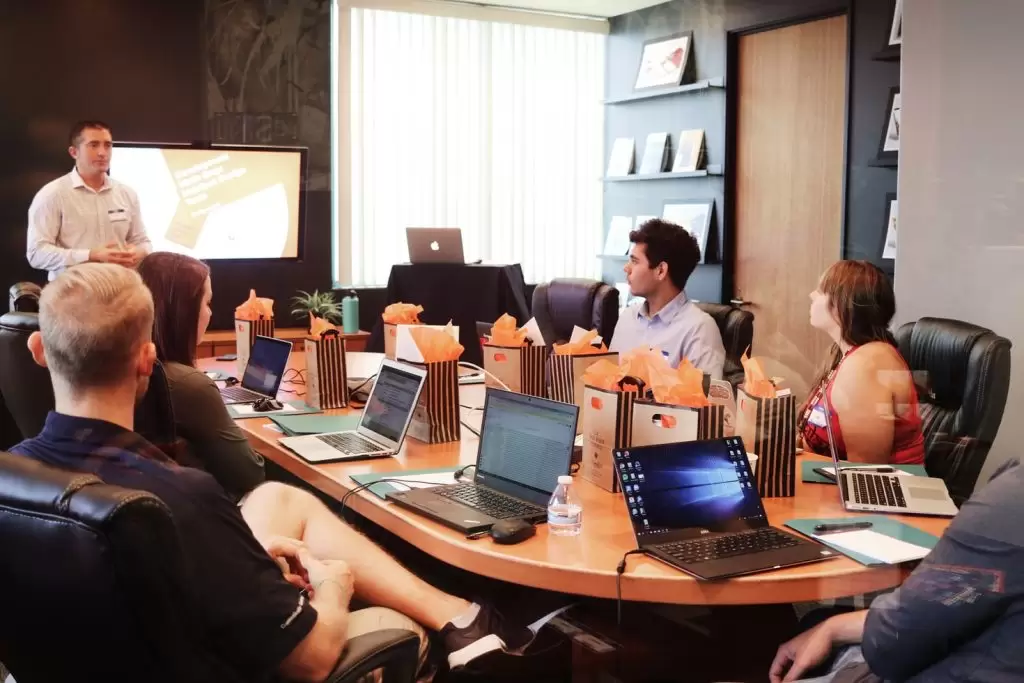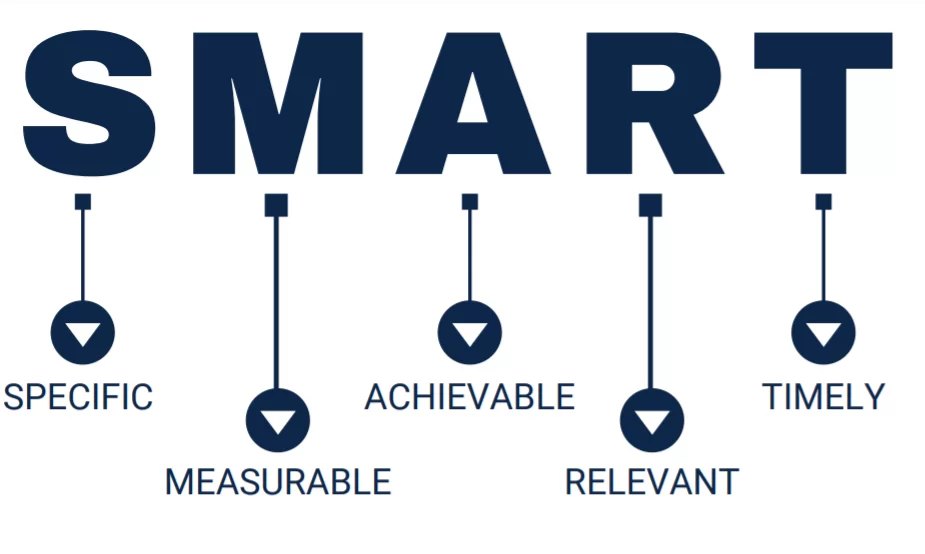Complete guide to Affiliate Marketing

A Guide to Successful Affiliate Marketing
The affiliate marketing landscape has changed drastically over the years. As the industry adapts, affiliate marketers and those offering affiliate programs need to be ready to adapt and this is often harder than it sounds. Regardless of which industry your affiliate program is based in, there are certain key factors that you need to be considering at all times to guarantee success.
In this guide, we are going to look at affiliate marketing in more detail and discuss how you can get on track to success.
When it comes to online marketing I’ve been around the block a few times. I cut my teeth in traditional marketing before joining the digital movement almost two decades ago back when AskJeeves was the biggest search engine and mobile phones were like bricks. That probably makes me sound old, but it’s also a testament to the depth of experience I’ve gained in digital marketing and that’s what makes me really good at what I do.
Whether you are an early stage startup or an established brand, we help our clients overcome the digital overwhelm and deliver better results. The digital world can be confusing, the affiliate world overwhelming, but it doesn’t have to be.
You can read more about me and the brands we’ve helped build successful affiliate marketing programs for HERE
This Affiliate Marketing guide is designed to help you get the best start from launching to running a successful affiliate program for your business.
It’s designed for SME’s, Digital Marketers at agencies, brands, networks and anyone else who wants to understand what an affiliate program looks like, how to launch one successfully and what the key components are for ensuring your affiliate marketing program drives consistent and regular sales and profit for your business.
What is Affiliate Marketing?
In simple terms, affiliate marketing is a remuneration and relationship based model which involves a company creating a partnership with a 3rd party website, app, or traffic channel and content owner, in order to drive traffic to their site for the products and services they offer.
It sounds simple, but it’s not. It’s now quite complex as you need to be adept at managing multiple types of publishers and affiliate businesses that are now also large scale media companies. Understanding the various needs and services these diverse entrepreneurs require and building your strategy to support them is a key part of the skills set required by Affiliate Program Managers

How does Affiliate Marketing work?
The affiliate or publisher sends their traffic to your website or app and if they convert that traffic to a sale, a commission is paid to the affiliate for that sale. Affiliate marketing revenue or commission goals can differ from company to company but ultimately, there is compensation agreed for the desired result being achieved.
Typically, the affiliate would promote a product that they think could make them money and they do everything that they can to attract new customers to that page to purchase the products they are selling to earn a commission. This kind of agreement comes with a long list of benefits for each side. I’ve listed some out below so you can see why this is such a popular form of marketing:
Benefits To Advertiser / Operator / Merchant:
- Easier to reach niche target audiences through a range of affiliate traffic sources or websites
- Affiliate remuneration or commission models are typically flexible and adaptable and cost effective because they only get paid once a sale or transaction is completed
- Driving new sales and links back to the website from affiliate partners can help improve your site SEO
- Results can be analyzedanalysed in real time to make the right decisions and provide detailed customer preferences
- Increased profit is driven over time because your brands or products are actively marketed without upfront advertising costs (Paid Media)
- Increased brand awareness is driven across hundreds of websites, social channels and email databases that affiliates can offer (mass marketing reach)
Benefits to Affiliate / Publisher / Ambassador / Influencer:
- Create a profitable business or revenue stream whilst working remotely and without high cost overheads or resourcing required
- Can join and earn commission from more than one affiliate program and promote a wide range of products and services to their audiences
- Select from a huge range of affiliate programs and multiple offers to promote from network platforms that make joining multiple programs efficient
- Potential to make a lot of money with the right program and incentive model whilst mitigating the risk of managing customers, product fulfillment, and any other business services
To explain this to you a bit better, I’ve put together some steps below:
We have been working with affiliates and affiliate programs for many years now and we’ve probably seen it all. From pet food to ewallets affiliate marketing is an effective way for brands to grow their customer base in a cost efficient manner.
Each affiliate program has its own perks and strategy supporting a businesses objectives – but they typically follow a clear strategy. Many think that affiliate marketing is extremely complicated to get into but this is not the case. The hard part is when you want to turn around your ROI (return on investment) and make your affiliate program a success or scaling into new markets, cost efficiently, but getting a program launched and started is really the easy part.
![]()
An Advertiser launches an affiliate program using in-house SaaS tracking solutions or via a 3rd party affiliate network technology with details of their commission and expected results (Terms and conditions are put in place)
![]()
The Affiliate joins an affiliate program and launches their own website or blog or content portal to then sell the advertiser products or services to their audience, or customer following.
![]()
Customers come along to the affiliate’s website or social pages and decide to make a purchase based on the content or offers they see.
![]()
The customer is redirected back to advertiser’s website to make purchase via the affiliate’s tracking links.
![]()
The affiliate receives commissions based on the purchases and this is recorded in the affiliate tracking technology or network platform. Commissions are calculated, sales validated and earnings paid at the end of each month or sometimes even more frequently or in real time.

The importance of the Affiliate – Advertiser Relationship
Affiliate programs and their structures can work very differently but these are the basic mechanics of how a program typically operate. Many advertisers adapt their affiliate programs as they go along, based on insights and tracking and market related changes. It is vital that as a business you understand what is involved in creating a successful affiliate program before setting one up – as each decision you make can impact your margins and success rates.
Like any form of paid marketing, you are entering into an agreement for an action to be delivered. You need to think of your affiliate program like a business partnership. This means ensuring you do adequate research on how this all works or you could risk failure and financial losses.
You are not hiring salespeople, you are creating marketing partnerships with 3rd party business owners or entrepreneurs who may be similar to content publishers so you need to understand exactly where and how they will promote your brand and set the parameters to manage this relationship accordingly.
The History of Affiliate Marketing
If you are just thinking about entering the world of affiliate marketing for the first time then you will have a lot to learn. Affiliate marketing is now a popular digital medium and it has evolved and changed a lot over time, mostly for the better. Affiliate marketing has been a vital customer acquisition method for many industries for more than 20 years. Over this time, various factors have affected how programs now function and technology has contributed to the way we model and create affiliate programs and what platforms we use today to generate consistent leads from this channel.
Generation 1
Between 1996 and 1999, affiliate marketing was poorly regulated , and quite basic in the operation and tracking functionality. . This was the birth period of affiliate marketing as we know it today and there was a distinct lack of best practices to guide ourselves to as the channel was literally evolving as a brand new digital marketing medium. There was a lot of click fraud, and bonus abuse and data was not as intelligent or trackable in real time as it is today. There was a high level of distrust and a lot of manual intervention required to manage this process and it was hard to scale globally.
Generation 2
Between 2000 and 2014, super affiliates came to light and technology really started to improve. We saw affiliates building pyramid schemes, programmes offering cash-back incentives to encourage affiliates to stimulate customer purchase behaviour which lead to inefficiencies and poor margins as price wars directed sales vs value tracking as we know today in attribution modelling methods emerged. Tracking became a little more sophisticated and the various sources of traffic could be tracked across multiple channels. This is the era when Affiliate Networks were created. Affiliates didn’t want to have to work with individual programs, they wanted one interface to manage all their product owners, reporting and payments were aggregated and things became easier to manage as the technology advanced allowing for complex remuneration and automated campaign management to leapfrog the scale of these programs to deliver result driven sales.
Generation 3
Between 2015 and 2020, there was a rise in use of independent SaaS platforms. This was due to the separation of service and technology. Brands wanted to own their affiliate relationships and the data from this channel so started to create in house programs to work with partners directly. They also started to hire in house experts and create affiliate marketing teams within their standard traditional marketing function. This is where we really started to see the affiliate model rise and start to leverage against other individual acquisition programs. Smaller brands start to operate their own affiliate programs and leverage their budgets with attribution modelling more effectively.
Generation 4
Since 2021, we have been fast adapting and growing as an industry because technology and sophisticated tracking methods across multiple channels, platforms and areas of the internet start to combine. Now we are looking ahead at NFT and Blockchain and the Metaverse to understand where and how our partners can interact and drive value customers to our businesses. Instant payouts, Crypto currency and other rRecent developments that have caused changes include increased regulations and expansion of the affiliate model as a key method for customer acquisition with some companies . This era is also seeing a global increase in sales happening online, better use of data and adaptable tracking. We are poised to see a new era of how we engage partners and build Affiliate Marketing programs coming with the impact of changing market forces, marketing automation, virtual reality and AI. There is still huge potential for growth and more changes to expect in the future from this channel.

Affiliate Marketing is a Competitive Channel
If you want to run a successful affiliate marketing program, you need to know who the key players are. Whatever angle you are coming into this industry, staying connected is vital, otherwise, you’re going to get lost in the sea of other affiliates and advertisers. This is a competitive market. Whilst we have spent two decades building relationships and network in this industry and if you don’t have the same, now is the time to put yourself out there. Whether you decide to manage your affiliate program in-house or you invest in an agency, you must build connections to really integrate yourself into this industry as an expert as everyone is still learning how to develop new strategies and keep up with marketing trends.
Here are some of the key players that make up the affiliate ecosystem:
If you have arrived here, on this page to learn how to run a successful affiliate marketing program – then chances are that you’re an advertiser, Operator, Brand or Merchant. Other terms for this role include ‘the brand’ or ‘the company’.
Advertisers/Brands
typically have affiliate managers or an entire marketing team dedicated to running the platform and managing affiliate partnerships as part of a bigger digital marketing team. They are the ones who have a product or service to sell.
Affiliates/Publishers
These are the people who are going to drive traffic to your website or offer. They are the ones promoting your product in return for commission. An affiliate will typically have their own website or social media account or perhaps have built a qualified and opted-in database of customers They are masters at acquiring customers online in various formats and they direct that traffic to your site to convert to sales.
Affiliate Networks / SaaS tracking solutions
Aggregate affiliate programs into one single tracking platform allowing affiliates the opportunity to work with several suppliers across one interface. Affiliate Networks offer access to a network of publishers to launch your program offering to, they have teams that recruit new publishers into your programthe platform and help you to promote your offers and campaigns whilst providing various levels of support for reporting, payments and administration. They will typically charge you on an override basis and will manage the portal for you. Each affiliate network will work in a different way with this being more valuable in some industries than others.
If you are hoping to track your payments and generate reports then you’ll need to get in touch with an SaaS platform which allows you to track and manage your affiliates directly and integrates with your own backend and reporting systems. There are various white label platforms available in the market and choosing which one is best for you will provide you with the tools you need to manage your affiliate program profitably. You’ll typically have to pay for this on a transaction or percentage of volume based model and it requires you to have in-house specialised marketing team to help run and maintain the technology
Affiliate Marketing Agencies
Ttypically have specialist teams dedicated to delivering results via several service options. They cannot always guarantee results but they often do a good job of bringing in the right affiliates in and negotiating commercial terms better as they have a broader view of the market and dive deep into the channel to understand and test things frequently. They have a good understanding of how affiliate marketing fits into the marketing mix and can help advise on everything from the platforms to commercial negotiation to help your program succeed. Typically agencies are hired for big technology projects, launches, and as an outsourced expert service solution when in house expertise is not in place. This is something that you might want to consider if you are struggling with your affiliate strategy to help you get launched or scale you up in complex channels and markets.

Why Affiliate Marketing requires a clear strategy.
In the next chapter, I’ll discuss affiliate marketing strategy and why I believe that it is so important to get this right – at the start of your program launch.
If you want your affiliate marketing to be a success, you need to understand the importance of building a clear affiliate strategy. Without the right strategy in place, your program will be disorganised and you could waste a lot of money and get poor results. Your strategy won’t always be the same as your competitor’s and while this is always also a moving target influenced by live market forces, supply and demand and how an affiliate’s inventory is bought and sold in any given month – you can still ensure you have a plan that meets your business objectives and revenue goals efficiently.
The strategy that you use to work with your partners, acts as a roadmap for growth and I would advise against making any kind of moves into this channel without having a clear plan in place and a budget invested to support it. Everyone on the team must know what their role is and how they contribute towards the success of the business and what kind of referring partners you need and want as well as what kinds of customers you’re looking to target via these partnerships.
If you want to ensure results, you must have clear goals set in place that align with the core values of your brand, follow your customer journey and buyer awareness funnel and the rest of your brand and direct marketing objectives.
Think of affiliate marketing like you’re baking a cake. A cake has a common set of ingredients. Your job as an affiliate program manager is to decide when and how to mix and bake these ingredients to deliver a brilliant end result. You might have all of the right ingredients at the start – but what makes your cake stand out from others who will also have the exact same ingredients as you?
Each ingredient within the cake needs to be used in the right way and would also follow a recipe for ensuring success. This is the strategy that you have set out and if this strategy isn’t achievable, your program is not going to be successful. Having the right strategy is also important consider for your budget planning. If you run over budget on certain areas, you are putting your business and your partnerships at risk. The right strategy goals, objectives and individual budgets set will guarantee success along the way – as long as you are willing to adapt along with it.
Understanding Your Partners (And their traffic)
One of the things that I we often find when talking with advertisers is that they don’t understand the different types of affiliates. If this is the case, then how can you plan an effective strategy that is going to get you the right results?
To help you understand this a bit more, I’ll explain some of the types of affiliates that you can work with in your affiliate program below:


Content Affiliates
If you are looking for affiliates with highly engaged audiences then you need to look a bit closer at content affiliates. This group of affiliates are experts in their field. They regularly create valuable content that is relevant and can focus on a specific niche. If you are able to get one of these affiliates on board, you could see a lot of traffic that is valuable to your brand. They tend to focus on SEO and trends to understand where and how to attract new customers to their site and convert them to yours.
Price Comparison Affiliates
Have you ever come across those sites that compare prices and certain features of products or services? Those are known as price comparison affiliates and can be useful to your brand. They focus on product reviews or guides and typically, consumers will trust these sites to help them make the right decisions based on qualitative reviews of your product and service.
Bloggers / Influencers / Ambassadors (Content Curators)
One of the most desirable kinds of affiliates that you’ll come across today are bloggers. Bloggers have moved past hosting their own site and are now making money across all social media platforms and even in Telegram and Chat groups or forums. The great thing about bloggers is that they typically have a large reach and most will have a niche that you can use.
Influencers or content Curators and ambassadors are fairly new and have come about due to the ease of using social media channels to build niche audiences around brands, thoughts, communities and video content too. These kinds of partners don’t necessarily need the same things as other affiliate types, and may require additional support or assets to actively promote your business online.
Email Affiliates
Another kind of affiliate that you need to consider is an email affiliate. Typically, this kind of affiliate will use demographics data to target customers and encourage them to buy your
products or service. They have various ways of collecting email addresses so traffic valuations should be cautious and with GDPR rules being very strict it is important to make sure that
they have obtained this data legally due to new data protection laws.
Voucher or Cashback, rewards and Loyalty Affiliates
In order to gain commission, voucher or cashback or loyalty incentive affiliates will typically offer deals and money off coupons to those who buy from their site. These can be very
popular with customers in retail environments as they typically rank high for common search terms. Think Groupon and My Voucher Codes which are good examples of affiliate sites in this
category. Voucher code affiliates aren’t just discount sites they can assist with retargeting, increasing on site conversion, decreasing cart abandonment and driving new customers to
your site from their other marketing efforts. They can also help you boost product-specific promotions.
Paid Search / Paid Media Affiliates
You might also come across paid search affiliates who specialise in paid advertising. These affiliates will typically use PPC ads to gain traffic and can be valuable if you do not have much experience in this area.
Super-Affiliates / Affiliate Networks
This one is a bit more complicated as it involves a sub-affiliate network signing up as an affiliate to your network. They then manage affiliate activity for another affiliate that gives them commission or pays them. Once you offer commission, this will be paid out amongst the sub-affiliate network’s clients. Once you understand the types of affiliates you want to work with, the customers they engage and the lifecycle stage they cover in the buyer journey – you can make sure that your strategy fits this.

Creating a Strategy
When it comes to actually setting up your affiliate marketing strategy, there are a few key things that you’ll need to consider. Without a strategy, you are limiting your success and risking your budget so this is very important.
To help you with this, I thought I’d give you some of my top tips for creating a strategy

Setting an Affiliate Budget
If you don’t know how much you have to spend then how can you create a strategy that is going to come with achievable goals? Spend some time figuring out how much you have to spend on fixed fee deals and hybrid CPA’s. Also think about the cost of running your program including technical platforms, resourcing and marketing your program to get affiliates to join it. Then add some more on top as a contingency budget – because it might be more expensive than you originally think. Look deeper into things like the cost of onboarding affiliates, the cost of managing this new aspect of your business and the cost of paying out commissions because -yes affiliate payouts also have fees associated to it especially if you’re paying your partners around the world.
Create a Risk Assessment of your Affiliate Program
Even though my first tip was to start with a budget, you must think about more than just the financial aspect of this process. It might be useful to think about some of the risks that come with creating an affiliate marketing platform as there definitely are some. These risks include the reputation of your brand being tarnished or associated with the wrong affiliates on board. A further risk involves the management of the entire project. Can you afford the additional stress of onboarding affiliates to your company? Do you have experienced resourcing in place to manage it effectively, will this affect your overall productivity or other marketing activities? Consider these risks carefully.
Get Expert Affiliate Advice
Our third tip for those who are hoping to create the perfect strategy for affiliate marketing is to get expert advice when you need it. You might want to get research underway of your competition or delve a little deeper at the value model that an affiliate program can have or simple ask for advice on what platform to use when starting out. Agenices can be a great support for this as they have have a wealth of experience in affiliate marketing and are always on hand to offer advice to anyone who needs it. If you are new to affiliate marketing then this advice could be extremely valuable to your business. Get in touch with Affiverse today for some additional tips or help to plan your strategy as this is really the most important step to take before leaping into Affiliate Marketing.
Leverage all the Affiliate Tools to help your growth
Using a variety of tools to help you support your affiliate program growth is a good idea not only to reduce resource time but also to speed up results. It is really important that you are using affiliate marketing and automation tools to make your life easier, regardless of your position in the affiliate industry. Each of these tools offer something different and trust us, we’ve tried a lot throughout the years
To give you some ideas of what to use, we’ve put together a list of some of Lee-Ann’s favourite tools of the trade below:

To give you some ideas of what to use, we’ve put together a list of some of Lee-Ann’s favourite tools of the trade below:
Canva
Canva is a design tool that you can use to design eBooks and graphics for affiliate onboarding and programme marketing.
Ubersuggest
Find out more about your competitors, and solidify your position in the industry.
SEMRush/ Similarweb/ Grovia / Publisher Discovery
Knowing where your traffic is coming from is vital, as is knowing where your competitor’s traffic is coming from and how this can help your affiliate partner discovery and outreach.
Snip.ly
We use Snip.ly to share information along with client offers on social channels. This is also a useful tool for driving conversions through content creation.
Designrr
We love educating affiliates about digital transformation, new products, and methodologies and I find quick ebooks or workbooks and white papers or case studies can help them learn new tactics to improve their conversion.
HelloBar
When it is time for a promo on an affiliate website, we use HelloBar to create quick content overlays.
Betalist
When I want to learn about new technology we always take a quick look at Betalist.org
Answer the Public
When customers have questions that need to be answered, Answer The Public can come in very handy to help generate content that resonates with your affiliates and helps them promote your service or product a little better.
Unsplash / Pixabay
Get Stock images can come in very handy when you are running an affiliate program or portal. For free stock images, I use Unsplash.
SurveyMonkey
Often, affiliate feedback is the best way to improve your portal. Survey Monkey allows you to generate questionnaires and analyse the answers
Loom
Loom is really useful for recording your screen and a personal message at the same time as creating an instantly shareable video. We use this when we want a more personal touch.
Promo.com
Another video tool that is useful to Promo.com. This works as a video maker and is worth a try.
Leadpages
Leadpages is great for generating leads and creating landing pages that work. If you don’t have much experience in web development, this is one to try.
Co-Schedule
Content marketing is very important and for this I often use CoSchedule.
Hootsuite
When I want to schedule social media posts, I use Hootsuite. This can save a lot of time spent managing various social media channels and accounts.
Trello / Asana
This tool is great for managing affiliate teams remotely and project planning and delegating tasks. Make sure to take a closer look at all of these tools and get in touch if you need some more advice on how to really use them.
You can also download our Top 20 Tools List on Affiverse HERE


How to start a successful affiliate program
I’ve talked a lot about the various aspects of affiliate programs in this guide, but haven’t
yet touched on some of the key points to help you make your affiliate program successful. As I previously mentioned, every affiliate marketing program is different and so a tailored approach to strategy is often the key to success.
Of course, there are certain things that all affiliate managers and advertisers should be
doing in order to make the program as successful as possible.
In this final chapter, I am going to look a bit closer at some of the things that you need to do to achieve this.
Hire the right affiliate management resources and skills
One of the best tips that I could give you in this guide to successful affiliate marketing is to choose the right team. You need to understand that your current team might excel in certain areas but not everyone is right for affiliate marketing. It might be useful to hire an external company to manage your new affiliate scheme, or to hire a team that is experienced or seek out specialist training such as the one Affiverse offers which is a 12 week accelerator called AMPP – Affiliate Manager Performance Program.


Technical Ability

Project management skills

Relationship building

Data extraction and insight

Commercial negotiation skills

Ability to adapt and learn
Budgeting
If you want to make your affiliate program successful, you need to consider your resources and your budget. Resources are often overlooked but if you want things to run smoothly, you need to know what resources you have.

Technology
It can be tempting to go for the cheapest platform and tracking solution but believe me this is the biggest mistake you can make. Having a platform that doesn’t allow you to scale isn’t trusted by affiliates and won’t grow WITH you as your program increases membership is something you don’t want to be lumbered with early on in your program life cycle. It’s vitally important to get this part of your program infrastructure – just right. The biggest reason why affiliate programs are often unprofitable is because their infrastructure is not set up correctly.
I would advise that you use an expert consultant to assist you with technical selections if you don’t have in house expertise in this area. It will save you a lot of time, energy and expense in the long run to get this part of your program launch 100% right. Data migrations and re-launches can be costly time consuming and cause a massive amount of headaches if they are not set up correctly.
Set SMART Objectives
No affiliate program is going to be a success without clear objectives. When a client comes to me and does not have any objectives in place, I make sure to let them know that this is vital. Your strategy is nothing without objectives being set and met.


If you already have some objectives for your affiliates and your affiliate program delivery in mind, compare them against that criteria. If your objectives don’t fit into those categories, it might be time to rethink what you have set up and how you are working with affiliates, and what kinds of affiliates you have and need.
Monitoring Success
One of the biggest mistakes that I see advertisers and affiliates make every single day involves monitoring progress and success. If you aren’t tracking your campaign stats and looking at the results and profit how can you possibly know if you are doing the right thing?
Monitoring can be tricky but if you have a plan in place, technology that provides intuitive reporting and are using the right kind of tools, you can make things a lot easier. Regular check-ins with your team are key to increase communication and ensure everything is going smoothly. Regular check ins with your affiliate partners are an ongoing requirement. Even as frequently as weekly calls can make a huge difference in the performance and delivery of campaigns.
When you do your check-ins, you must act on any issues right away. You are monitoring the situation for your own growth so make it count!
Focus on constant Affiliate Engagement
One of the key areas that a lot of affiliate managers and program leaders fail at is affiliate engagement. Why would anyone want to help your business become successful if you are not interested in helping them and keeping them updated? Affiliate engagement is key and you need to make sure that this is something that you are considering. I like to refer to this as part of your affiliate lifecycle. It’s often the biggest part that managers forget to implement in a program. They worry about the registration princess, but do little to facilitate a personalised experience for onboarding and engagement thereafter. I always aim to create strong relationships with my affiliates and I would always encourage you to do the same.
After all, this is one of the sure-fire ways to achieve successful affiliate marketing. To help you, I’m going to give you some of my best tips for building relationships:
Build Affiliate relationships that last
Offer a Personal Touch
As I discussed earlier on in the guide, there are so many different kinds of affiliates that you can work with. This is why you need to make sure that you are considering their background and what they do when you are sending out any kind of communications. A personal touch can go a long way and they’ll respect you more if you use this approach.
Create customised emails, be on the end of the phone and offer the personal contact via skype or regular monthly catch up calls to keep affiliates engaged in your program.
Host + Attend Events
We have both hosted and attended our fair share of affiliate events over the years. We speak with authority when we tell you that networking at these to meet new partners work! You need to encourage your affiliates to network with your own team and with other affiliates at events too. Building this kind of community can go a long way in encouraging them to stick around and deliver results. Host your own events, collaborate with others to
engage new partners too.Trust is built on reputation and you can build yours virtually and at physical events quickly when starting out. Events are also a key part of your program marketing strategy so get to as many as possible virtually or in person when you can. Launching a program is not enough to make affiliates come to work with you. You need to be marketing your program, it’s benefits and events are a good way to do this.
Providing Resources
A third way to engage with your affiliates is to provide them with resources that could help. Do you have information that they could use about new products or services that you are offering? Could you help them out with SEO and making sure that their website is gaining traffic to link back around to yours?
Provide any resources that you can, both to new affiliates you have on boarded and existing ones. This way, they’ll stay engaged and will be more willing to drive traffic.

The final point that I want to make for those who want to run a successful affiliate marketing program is to understand all the local regulations and advertising standards and codes that will apply to you.
This can change as you move across different industries but overall, there are some general rules in place.
For example, if you were in the iGaming industry, you would need to ensure that all affiliates and your entire team understand any regulations set out by governing bodies. Your affiliates breaking regulations set out by your license could backfire on you and you could be fined. This is why it is so key that you understand this. Same goes for geographical locations, for example in the US you have to have clear parameters in your ads that tell a customer that you are up-selling an affiliate offer to remain compliant with local advertising laws.
Some of the key areas that you’ll want to look at when understanding regulations include:


GDPR

Disclosure

ePrivacy
Make sure to do extensive research on all of these and you’ll be on track for success.
Make sure to do extensive research on all of these and you’ll be on track for success.
In the final chapter of this guide to successful affiliate marketing, I thought I’d talk a bit more about the various traffic sources that you’ll need to consider. If you don’t understand how to to drive traffic to your site then this is something that you will gain a lot of value from.
There are various kinds of traffic sources that you can utilise and these are often split
into four categories:
> High Value (example PPC traffic)
> High Volume (example voucher code or bonus or incentivised traffic)
> Low Value (lead generation from multiples sources)
> Low Volume (email marketing from lead generation or SEO on long tail keywords)
It is important that you understand what you need and what will work for you. There are benefits to all of these kinds of sources and some work well together. For example, a love volume, high value source can be extremely beneficial.
There are a few aspects that you need to consider carefully when you are choosing
your traffic source. To make this easier, I’ll look at each in a little more detail below.
Cost
One of the key areas to address when choosing a traffic source to focus
on for your affiliate marketing is the cost. Each source will have its cost
based on the number of GEOs you can monetise in and the quality of
traffic. Understanding how to monetise multiple affiliates is an important
part of your program marketing strategy and profitability modelling. I
teach you how to do this in my Advanced Courses. Certain traffic sources
might be overpriced due to demand and high competition and others
might be a good deal if you get them at the right time.
Amount
Another factor to consider involves the amount of traffic that is available.
It is important to understand that traffic quality is also related to the price
you pay for your visits. And also where you might be positioned on the
affiliates web page or email or wherever you are being marketed. The
amount of traffic on offer can be different from vertical to vertical. In
affiliate marketing the key thing is to find quality traffic at the right price
versus volume of affiliates who never perform for you or who send you
traffic in the wrong value segments. I have a HANDY CALCULATOR you
can access which might help you with these considerations.
Regulations
As we discussed before, regulations are extremely important in affiliate marketing. When choosing your traffic source, you need to read their regulations to make sure that you are complying. From ads images copy and brand guides, all of these things need to be checked regularly. The last thing you want is to get is a advertising or regulatory fine because your third party affiliates are non compliantly marketing your brand. Take a look at these resources to understand more about the advertising and affiliate codes of conduct.
https://www.iabuk.com/content-hub/7558
https://www.asa.org.uk/codes-and-rulings/advertising-codes.html
https://www.itgovernance.co.uk/eprivacy-regulation-epr
Quality
Bots are a big problem in the world of affiliate marketing and this is something that can massively affect the quality of traffic from certain sources. This is something that you need to look out for to avoid affiliate fraud. Traffic quality and the way that customers are being sourced is important and you should know this about every publisher or affiliate you work with. Do not take risks on quality as it can only hurt your brand and your pocket in the long run. Look for credibility and proof that this traffic source isn’t going to affect your reputation. Don’t be afraid to ask affiliates lots of questions before onboarding them to your program.
Targeting
If you are already involved in marketing, you’ll know just how valuable targeting can be. There are so many options when it comes to targeting including goe’s, browsers, time of day and age. The list goes on, so make sure to choose affiliates with traffic sources that allow you to target the right people.


PPC – pay per click marketing
PPC traffic is a source that many people use to gain traffic on their site. The great thing about PPC is that the results are instant, the ad goes live, and traffic comes in quickly. Because it’s targeted it can be quite valuable. Of course, PPC is also expensive and if not managed correctly, could take up a lot of your budget.
SEO – Search Engine Marketing
Everyone working in affiliate marketing should know a tiny bit more about SEO and how it works to increase site traffic. This kind of traffic can be extremely valuable, especially if you manage to get your site to rank on page one. One thing to consider here is that SEO can take up to six (6) months to work, so if you are in a rush to increase traffic, remember that this takes time and won’t produce immediate results. However, I would encourage you to do this in the background as it will have a great effect in the long-term.
Segmentation
My final tip would be that you spread out your affiliates in multiple channels and verticals. Really take a look at your customer purchasing journey , use the data on your site to work out where and how customers are finding you and then work backwards from there to ensure your affiliate program provides a mix of partners referring and covering all the steps in this process.
Don’t work to the 80/20 rule. Rather focus on building a well rounded program with multivariate traffic sources. Make sure that you have a good spread of traffic sources and affiliate types joined into your program so that you can manage risk profiling. The wider the net the bigger opportunity you have to reach new audiences. You may also find some traffic sources don’t work as well as others for your brand.
Monitoring can be tricky but if you have a plan in place, technology that provides intuitive reporting and are using the right kind of tools, you can make things a lot easier. Regular check-ins with your team are key to increase communication and ensure everything is going smoothly. Regular check ins with your affiliate partners are an ongoing requirement. Even as frequently as weekly calls can make a huge difference in the performance and delivery of campaigns.
REMEMBER, It isn’t just up to you to increase traffic, that’s what your affiliates are earning commission for!
Provide guidance on the various traffic sources and make sure that they are making the right decisions.
Understanding where and how to launch an affiliate program in complex situations such as global brand reach , covering complexities of and localised languages, regulatory controls with multiple brands in a network setting or creating local bundled product offers can be tricky. In season 5 of the Affiverse Affiliate Marketing Podcast we cover a lot of these items so tune in to take a listen to what our experts have offered in terms of how to navigate global affiliate marketing – better.
Taking advantage of retail or seasonal peaks is yet another thing to consider in your marketing strategy.
All of these events play a part in deciding where, and how much to pay for a transaction or promotion to be placed in a certain section of an affiliates website.
Creating a checklist of how to leverage your existing partners to grow your program is a good idea. You can also keep track of your program metrics and determine specific trends that can help you optimise sales and conversions within your program. This is where data becomes very important. You might also want to consider your program lifecycle, how you can use the technology you have to automate sequences and or create groups and targets for managing multiple affiliates and publishers in your platform.
Get a helping hand with your affiliate marketing program launch
All of these things can seem daunting however the good news is that we are here to help!
Here’s a list of the area’s that Affiverse can help you with in your Affiliate Marketing Journey:

- Program Launches
- Affiliate Program Management
- Affiliate Recruitment & Regional Growth Development
- Platform Migrations
- Affiliate Program Audits
- Affiliate Management Training
Conclusion
In this guide to affiliate marketing, we have certainly shared a lot of the groundwork that you should consider looking at before jumping in to launch your own affiliate program. We have tried to explain what you need to know to launch, scale and grow an affiliate program both using an in-house tracking and resource or accessing a 3rd party Affiliate Network and agency team to support your brand growth.
There is so much to think about when you are getting started in the affiliate marketing industry. It is likely that you’ll come across a lot of jargon and technical speak that you don’t know and having a helping hand to guide you to success, saving your time, and money is a great idea!
Contact Us – if you want to set up a quick 15 minute meeting to talk about your affiliate program launch or scale !






